Themed collection 2020 Journal of Materials Chemistry Lectureship Winner: Giulia Grancini

Dynamical evolution of the 2D/3D interface: a hidden driver behind perovskite solar cell instability
We reveal that 2D/3D interfaces are dynamical in nature which is detrimental for long term perovskite solar cells stability.
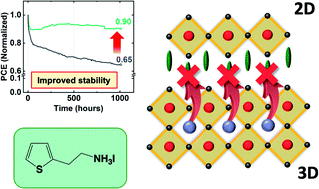
J. Mater. Chem. A, 2020,8, 2343-2348
https://doi.org/10.1039/C9TA12489F
Improved efficiency and reduced hysteresis in ultra-stable fully printable mesoscopic perovskite solar cells through incorporation of CuSCN into the perovskite layer
Improved charge extraction in carbon-based fully printable hole transport layer-free mesoscopic perovskite solar cells with excellent long-term stability.
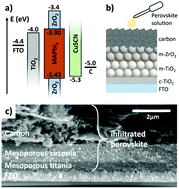
J. Mater. Chem. A, 2019,7, 8073-8077
https://doi.org/10.1039/C9TA00669A
Molecular engineering of face-on oriented dopant-free hole transporting material for perovskite solar cells with 19% PCE
Dopant-free HTM KR321 showed highly ordered characteristic face-on organization leading to increased vertical charge transport and PCE over 19% in PSC with improved stability.
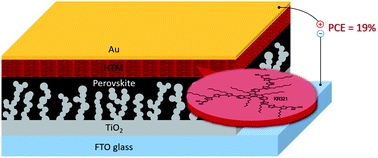
J. Mater. Chem. A, 2017,5, 7811-7815
https://doi.org/10.1039/C7TA01718A
Donor–π–donor type hole transporting materials: marked π-bridge effects on optoelectronic properties, solid-state structure, and perovskite solar cell efficiency
Donor–π-bridge–donor type oligomers (D–π–D) have been studied intensively as active materials for organic optoelectronic devices.

Chem. Sci., 2016,7, 6068-6075
https://doi.org/10.1039/C6SC01478J
Band-bending induced passivation: high performance and stable perovskite solar cells using a perhydropoly(silazane) precursor
It could successfully control the band-bending of the perovskite semiconductor, which led to improvement of the photovoltaic performance.
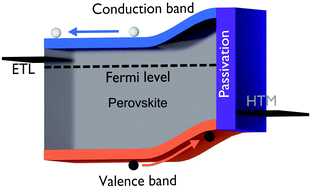
Energy Environ. Sci., 2020,13, 1222-1230
https://doi.org/10.1039/C9EE02028D
Exploring the role of halide mixing in lead-free BZA2SnX4 two dimensional hybrid perovskites
The role of halide substitution in a lead-free 2D hybrid perovskite is studied on the BZA2SnX4 (BZA = benzylammonium; X = Cl, Br, I) system, by reporting the two novel compositions BZA2SnBr4 and BZA2SnCl4.
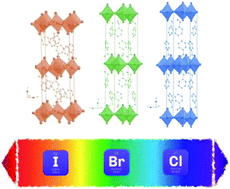
J. Mater. Chem. A, 2020,8, 1875-1886
https://doi.org/10.1039/C9TA11923J
Saddle-like, π-conjugated, cyclooctatetrathiophene-based, hole-transporting material for perovskite solar cells
A new HTM incorporating a saddle-like, thiophene-rich core endowed with four triphenylamine units is proposed. The new HTM leads to PSCs reaching efficiencies up to 16.3%.
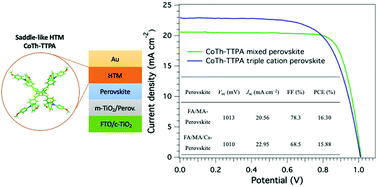
J. Mater. Chem. C, 2019,7, 6656-6663
https://doi.org/10.1039/C9TC00437H
Selective growth of layered perovskites for stable and efficient photovoltaics
We achieved improvement in performance and stability of PSCs by growing 2D perovskite layer on top of 3D perovskite films.
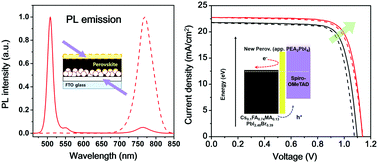
Energy Environ. Sci., 2018,11, 952-959
https://doi.org/10.1039/C7EE03513F
Highly efficient perovskite solar cells with a compositionally engineered perovskite/hole transporting material interface
We demonstrate reduced charge recombination by formation of an engineered passivating layer, which leads to an enhanced power conversion efficiency of 21%.
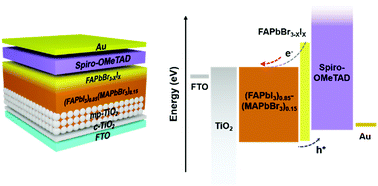
Energy Environ. Sci., 2017,10, 621-627
https://doi.org/10.1039/C6EE03182J
An efficient perovskite solar cell with symmetrical Zn(II) phthalocyanine infiltrated buffering porous Al2O3 as the hybrid interfacial hole-transporting layer
An interfacial buffer layer made of Al2O3 and sym-HTPcH facilitates perovskite solar cells with an average PCE value of 12.3%.
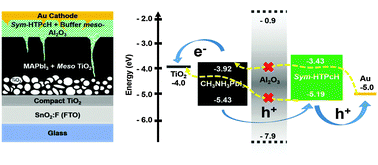
Phys. Chem. Chem. Phys., 2016,18, 27083-27089
https://doi.org/10.1039/C6CP03396B
About this collection
We are delighted to announce that Professor Giulia Grancini has been selected as the winner of the Journal of Materials Chemistry Lectureship 2020. To celebrate, we have put together this collection of her publications in Royal Society of Chemistry journals.
The Journal of Materials Chemistry annual lectureship, established in 2010, honours early-career scientists who have made a significant contribution to the field of materials chemistry.
The Lectureship recipient receives expenses to cover travel and accommodation costs to attend and present at a leading international meeting. The recipient is also invited to contribute an article to one of the Journal of Materials Chemistry journals and to receive a complimentary back cover for the issue in which the article appears.
Giulia is Associate Professor of Chemistry at University of Pavia, Italy, leading the PVsquared2 team and Principal Investigator of the European Project “HYNANO” (ERC H2020 StG 2018), aiming at the development of novel hybrid perovskites materials and innovative functional interfaces for efficient, cheap and stable photovoltaics. Within this field, Giulia contributed to develop new functional interfaces with low dimensional perovskite, as a way to boost device stability.
She is the author of 92 peer-reviewed scientific papers (h-index=46, >15,000 citations). In 2019 she received the USERN prize in Physical Science, the Swiss Physical Society Award in 2018 for Young Researcher and the IUPAP Young Scientist Prize in Optics. She is currently USERN Ambassador for Italy and board member of the Young Academy of Europe. In 2019 she was listed among the highly cited scientists from Web-of-Science. In 2020 she was listed in the “100 experts against stereotypes project” which identified top-italian women scientists. She is also part of the “1MWIS campaign”, a global effort to promote the role of women in STEM disciplines. More can be found at https://pvsquared2.unipv.it